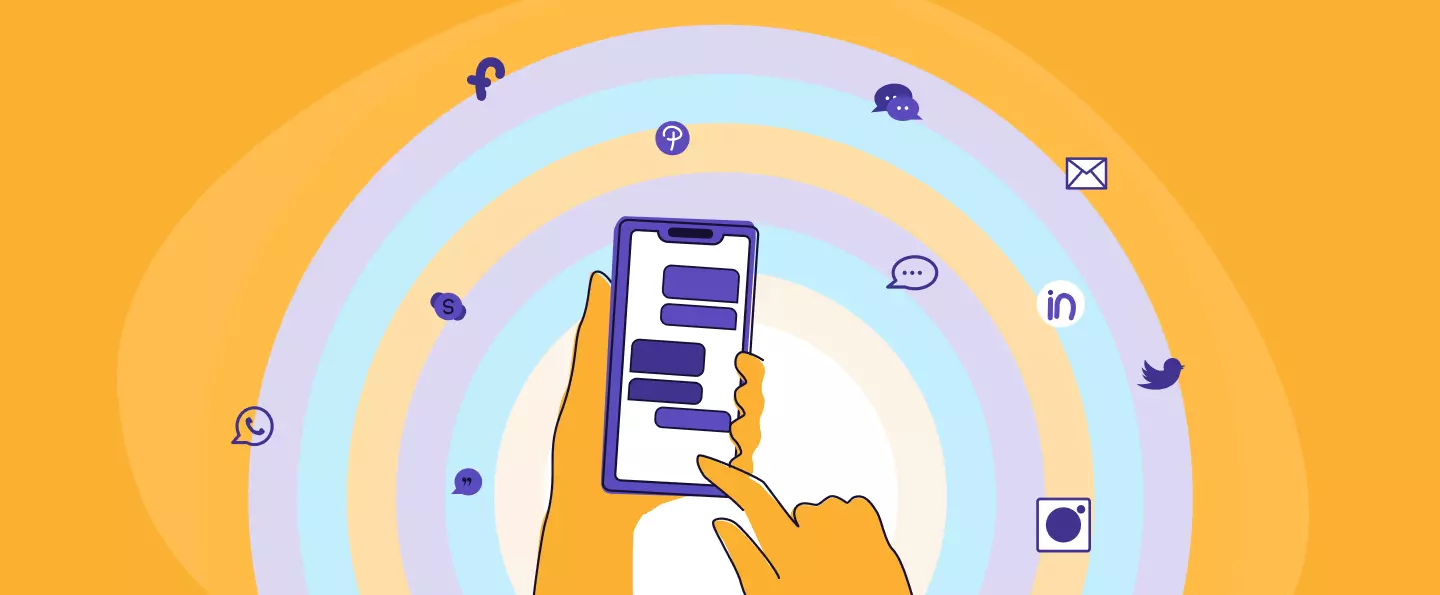Sending your data to our servers, please wait...





Oops... No results found.
Please try a different search phrase.
Remote Culture 7 min read
Expert Insights: Scaling a Telehealth Startup During COVID
Written by Dallin Porter
Marketing Director @ Galactic Fed
Expert reviewed by Dallin Porter
Marketing Director @ Galactic Fed
Published 29 Apr 2020
As part of our ongoing Roundtable Discussions, we chatted with Amber Theurer and LJ Troilo, from ivee. Ivee is an app that connects its users with mobile IV therapy, and is what happens when tech meets wellness. They provided some insight into ways they adapted during COVID-19, and how consumer perception towards health and wellness are changing.
How has the landscape of your industry changed since COVID 19?
The health and wellness industry has seen increasing demand since the COVID-19 outbreak. This is due to a number of factors. As the lack of ability of hospitals and medical providers intensifies, so does the sense of urgency surrounding personal, everyday self-care. An overwhelming fear of contamination is leading people to seek out remote health solutions. Many companies deemed non-essential are unable to operate, so the general public has more time on their hands than ever. Even those who are still employed are working from home. That being said, the desire to reach peak physical, mental and spiritual form has been heightened.
The fact that the global wellness industry was worth $4.5 trillion in 2018 (a 12.8% increase from 2015-2017) is also important to note here. The health and wellness industry was on an upwards trajectory before COVID-19. Given its essential nature, it’s no surprise that it’s still rapidly rising. Many industries even loosely related to wellness, such as beauty, are taking advantage of this opening.
How have you pivoted your business to adapt to COVID 19?
We haven’t had to pivot our product. Instead, we’ve had to focus on adjusting some of our user acquisition channels.
We have about 12 wellness brick-and-mortar mortar partners in NYC, who use our infrastructure to offer IV therapy on-site. We also had about 25+ experiential marketing events in mid-March through April scheduled throughout the city. These were in effort to gain physical touchpoints with our audience, as in a digital world, these interactions can definitely help to cut through the noise. Because of the strict shelter-in-place order in NYC, we are now pivoting to reproduce these audience interactions online.
What have been some of the roadblocks in adapting or changing your business because of COVID 19?
As touched on in the last question, our main challenge has been altering our physical marketing channels. Our brick-and-mortar wellness partners have all been forced to halt operations, and all of our events have been postponed until further notice.
We are a tech company that delivers both a strong digital and physical experience. That being said, pre-COVID 19 we placed a heavy emphasis on optimizing our experiential marketing touchpoints, as these were a testament to our overall mission.
Because we are limited by restricted interaction, we have had to establish new ways to fully deliver this experience online. How can we provide a true glimpse of the ivee experience digitally - not just our app, but the personalities of our nurse team, the post-IV feeling of rejuvenation? We have a strong digital marketing infrastructure, however, lately, we have been focusing on how we can make the ivee treatment journey as tangible to our audience as possible.
Do you have any interesting insights or outcomes in terms of your audience or typical customers shifting since COVID-19?
Our customer base is pretty much the same in the short term, but in the long term, this will definitely broaden our future customer base that orders treatments outside of IV therapy. The public and legislative stance on telemedicine have shifted in a very progressive direction in the last few months. Additionally, our nurse team is on the front lines of the pandemic. Supporting them through this crisis has definitely made the team more close-knit, collaborative, and open.
How has consumer perception of health and wellness changed since COVID 19?
There’s a paradox right now where our healthcare system is failing, yet the wellness market is soaring. Individuals are beginning to understand the importance of personal health and wellness, and truly implementing it in their lives.
In the example of COVID-19, it became crystal clear to many that immunity is not something that can be purchased as a magic pill. It is something that is built over time through intentional lifestyle choices. People are becoming more participatory in their health. They are looking for credible sources of wellness guidance. They are seeking brands that help them achieve optimal performance - not just to function at their best, but to protect themselves as well.
In what ways has COVID 19 highlighted the gaps or blind spots in the health and mental wellness space?
COVID-19 has shown that the previous health and mental wellness spaces were somewhat outdated. Individuals are turning towards solutions that allow them to have doctor and therapist sessions at home. While these options existed before, few individuals fully embraced them. There is definitely an element of connection that comes from in-person care that can’t truly be replicated virtually. However, remote wellness platforms prove that both money and time can be saved via online communication.
Further, COVID-19 has revealed the overwhelming need for credible health content. Sparked by the desire to stay informed about the virus’ impact on their health, individuals also now are seeking information that can help them not only beat the virus, but also stay well in general. Many brands are adapting to this rising demand by making education a heightened pillar of their ethos.
In your presentation you said “chaos is a ladder” can you elaborate on what you meant by that?
Events like this crisis are pivotal points that have everlasting effects on the world we live in. When times are uncertain and urgent, bureaucracy falls to the wayside of action. Telemedicine has made a 5-year jump in the last two months, both in societal adoption and in legislation.
How can marketing agencies support telemedicine and businesses like yours during this time?
Marketing agencies can stay as educated as possible on health and wellness in order to help clients understand what’s working and what’s not. This may seem obvious, but most brands are putting out similar content and using overlapping strategies, ie. hosting webinars, offering free meditations, etc. Marketing agencies can help brands break through this sea of monotony by offering clients truly innovative ways to engage with their target audience. The main questions we’re asking as a company right now: How can we engage with our audience? How can we show the importance of our offering, in a time when many are sticking to the necessities? Giving wellness companies tools, ideas, and strategies to do so is key.

Dallin Porter
Marketing Director @ Galactic Fed



